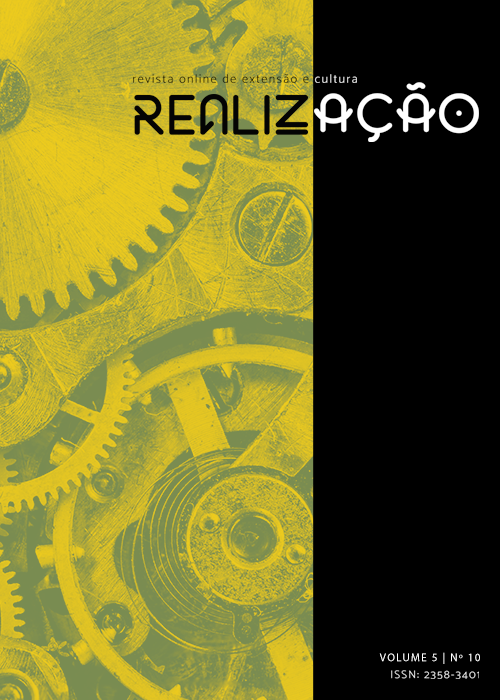Temperature and humidity variations in a housing estate Deoclécio Artuzzi (I and II) and Harrison de Figueiredo (III), Dourados (MS): an analysis of the autumn (2016)
DOI:
https://doi.org/10.30612/re-ufgd.v5i10.8609Keywords:
Thermal comfort , Temperature , HumidityAbstract
Climate change, the architectural patterns that is imposed, the routine life of the people, human activities and environmental impacts of rapid and chaotic urban growth are just some initial assignments when he raises the issue of urban climate and the thermal comfort. This article aims to show a brief study on the temperature and humidity variations in a housing estate of Dourados (MS), taking into account the data collected in the field through thermometer of temperature and humidity, and data made available by Embrapa – Centro Oeste, as the temperature and humidity (minimum, maximum and average) in the course of 10 days, one at a time.
Downloads
References
FROTA, A. B., SCHIFFER, S. R. Manual de Conforto Térmico. São Paulo: Studio Nobel, 2007.
NIMER, Edmond. Climatologia do Brasil. 2ª edição Rio de Janeiro: IBGE, 1989.
SANTOS, V. A.; SILVA, C. A.; SCHNEIDER, H. As características do clima de Dourados (MS) e suas conexões com os sistemas atmosféricos regionais. Revista Brasileira de Climatologia, v. 9, p. 80-93, 2012.
ZAVATTINI, J. A. e BOIN, M. N. Climatologia Geográfica: Teoria e Prática de Pesquisa. 1 Ed. Campinas – SP: Alínea Editora, 2013. v. 1. 150p.
Downloads
Published
How to Cite
Issue
Section
License
Copyright (c) 2018 Deives Gabriel Bortolanza e Santos, Charlei Aparecido da Silva, Vladimir Aparecido dos Santos

This work is licensed under a Creative Commons Attribution-NonCommercial-ShareAlike 4.0 International License.
Autores que publicam nesta revista aceitam as normas de publicação, bem como, concordam com os seguintes termos:
(a) O Conselho Editorial se reserva ao direito de efetuar, nos originais, alterações da Língua portuguesa para se manter o padrão culto da língua, respeitando, porém, o estilo dos autores.
(b) Autores mantêm os direitos autorais e concedem à revista o direito de primeira publicação, com o trabalho simultaneamente licenciado sob a Creative Commons Atribuição-NãoComercial-CompartilhaIgual 4.0 Internacional que permite: Compartilhar — copiar e redistribuir o material em qualquer suporte ou formato e Adaptar — remixar, transformar, e criar a partir do material. A Creative Commons Atribuição-NãoComercial-CompartilhaIgual 4.0 Internacional considera os termos seguintes:
- Atribuição — Você deve dar o crédito apropriado, prover um link para a licença e indicar se mudanças foram feitas. Você deve fazê-lo em qualquer circunstância razoável, mas de nenhuma maneira que sugira que o licenciante apoia você ou o seu uso.
- NãoComercial — Você não pode usar o material para fins comerciais.
- CompartilhaIgual — Se você remixar, transformar, ou criar a partir do material, tem de distribuir as suas contribuições sob a mesma licença que o original.
- Sem restrições adicionais — Você não pode aplicar termos jurídicos ou medidas de caráter tecnológico que restrinjam legalmente outros de fazerem algo que a licença permita.


